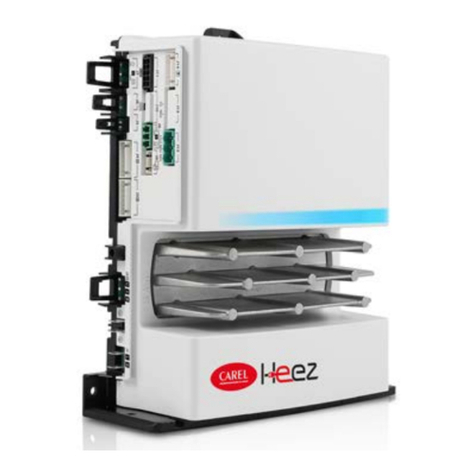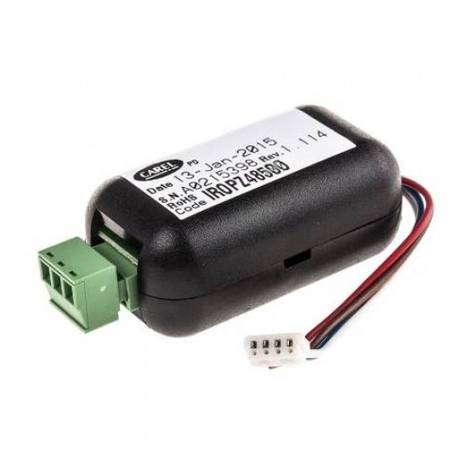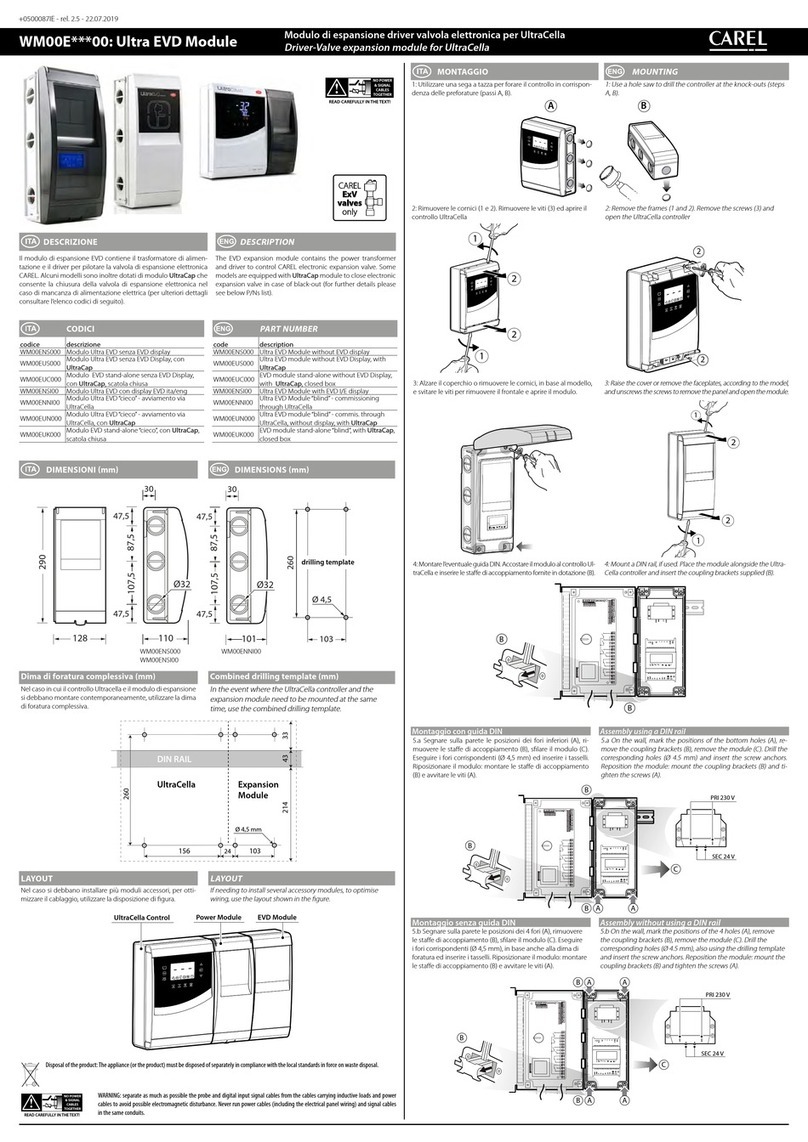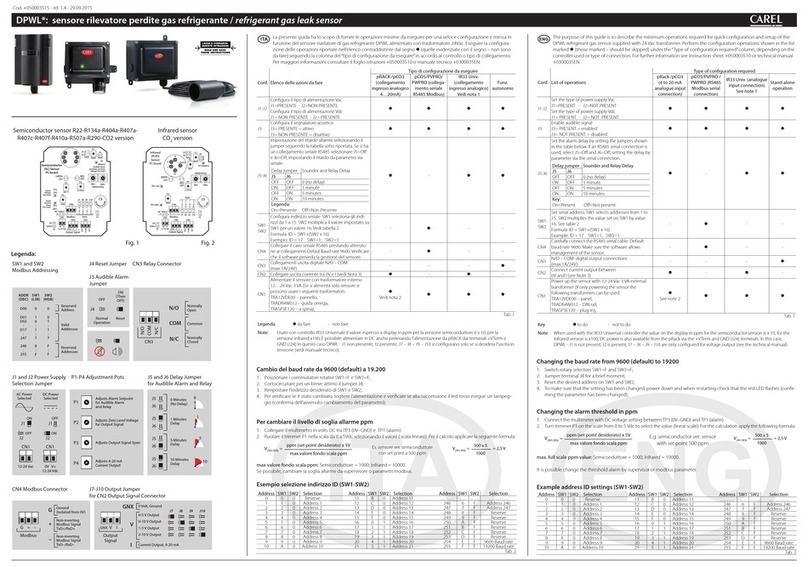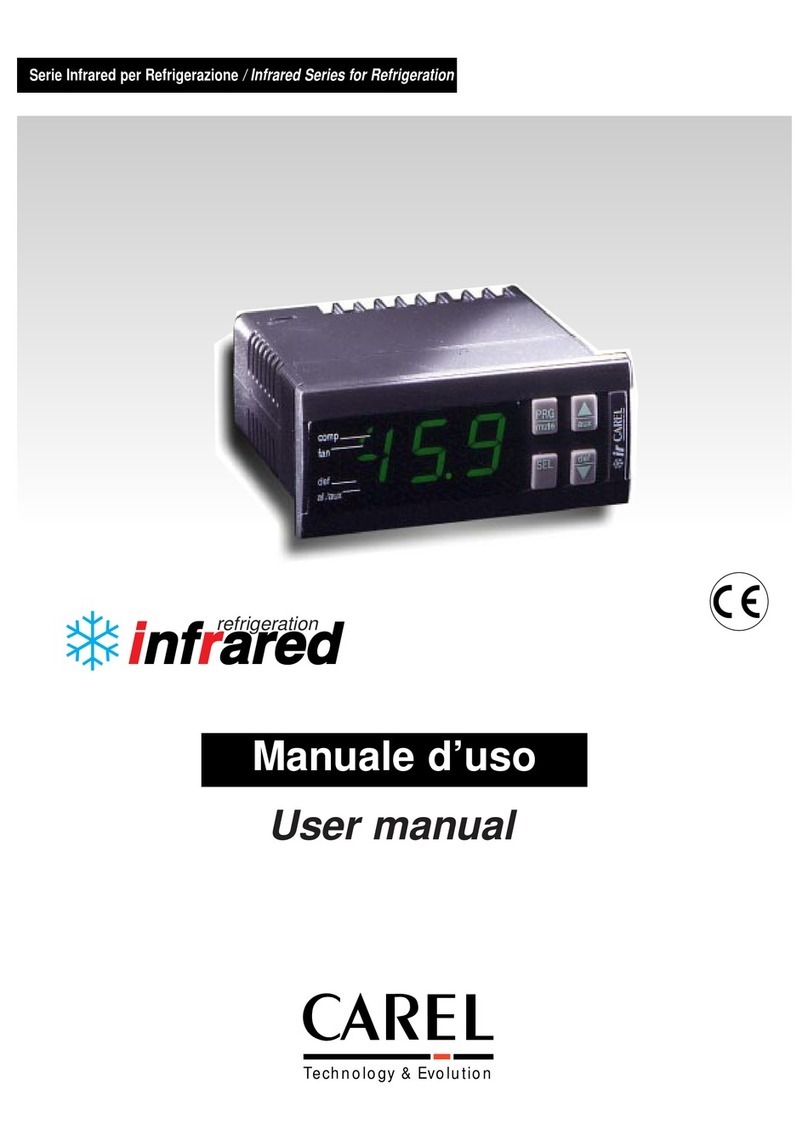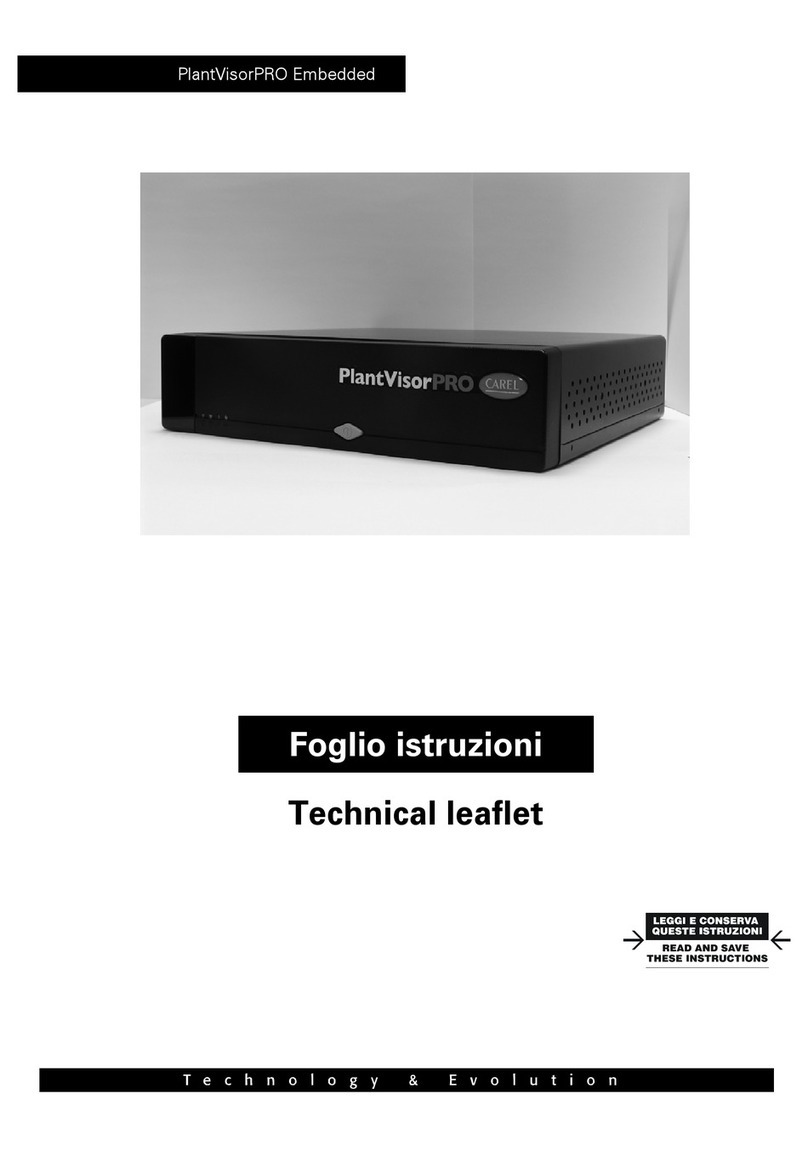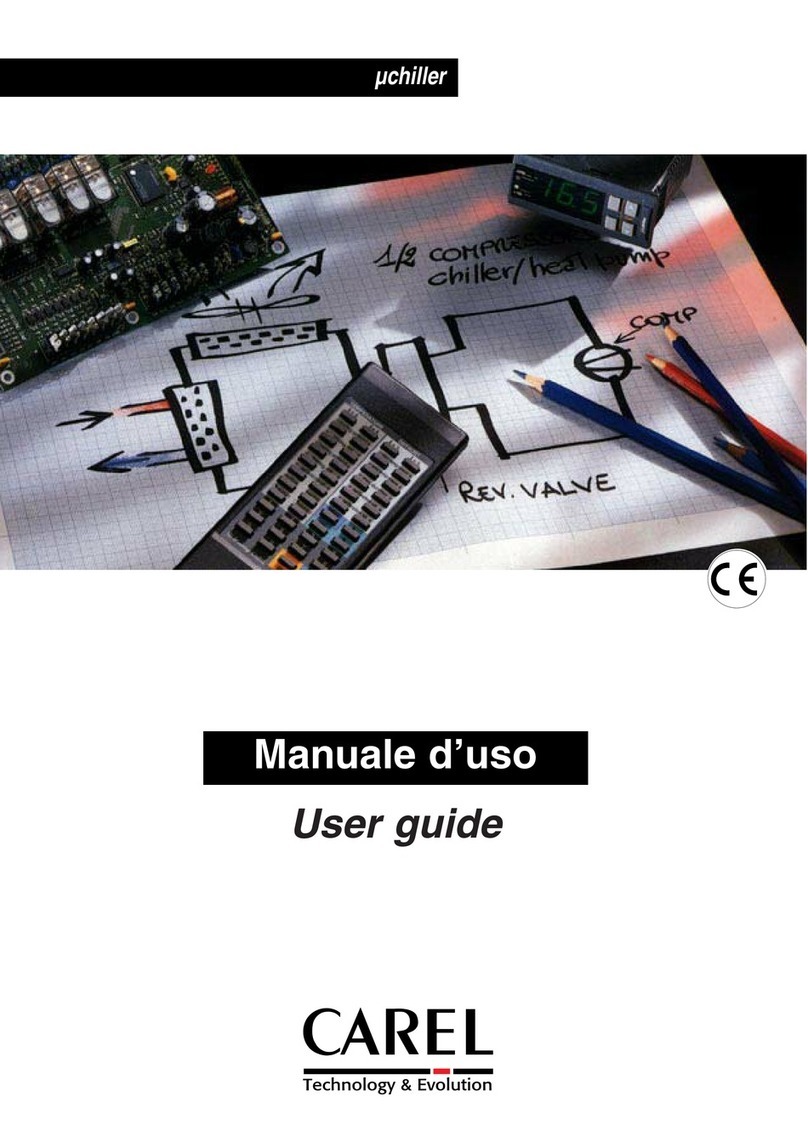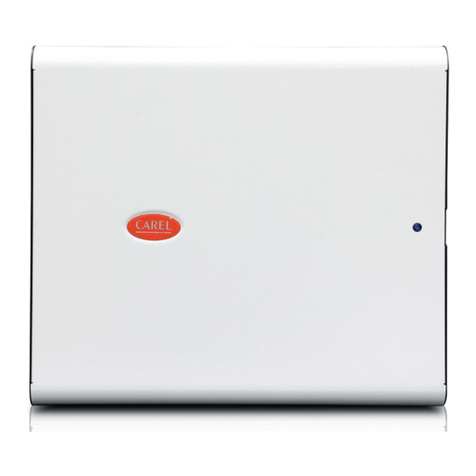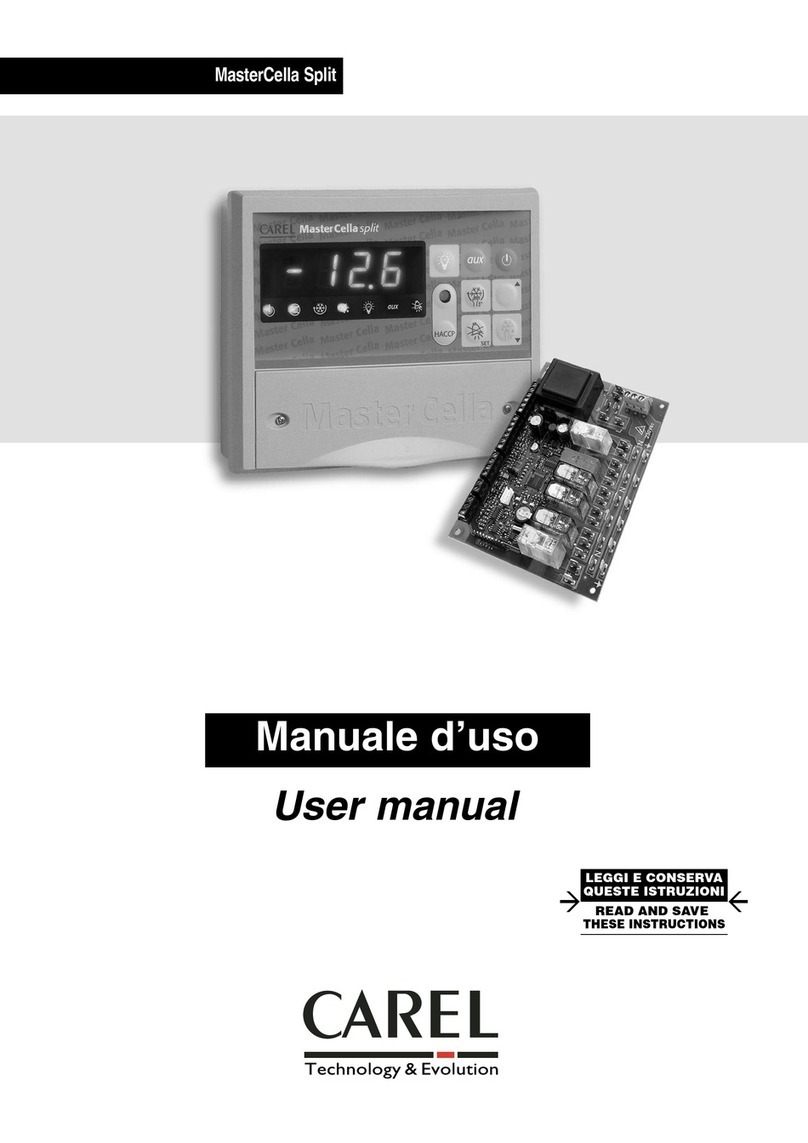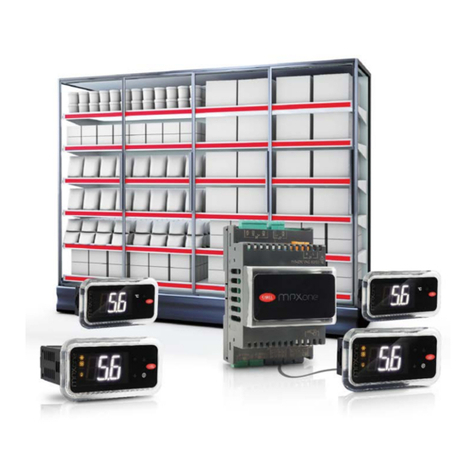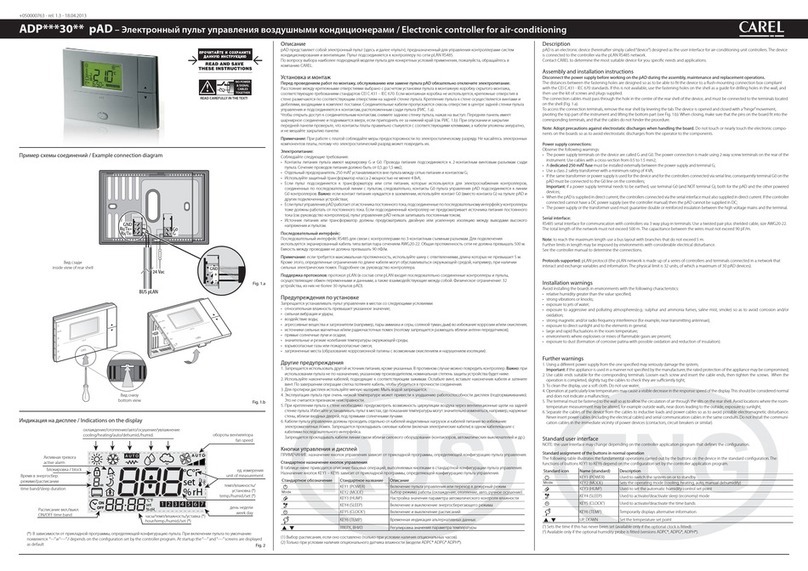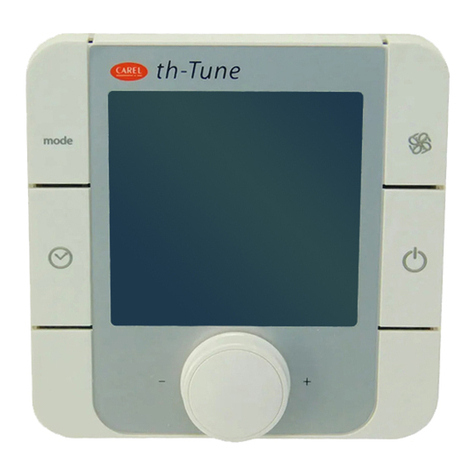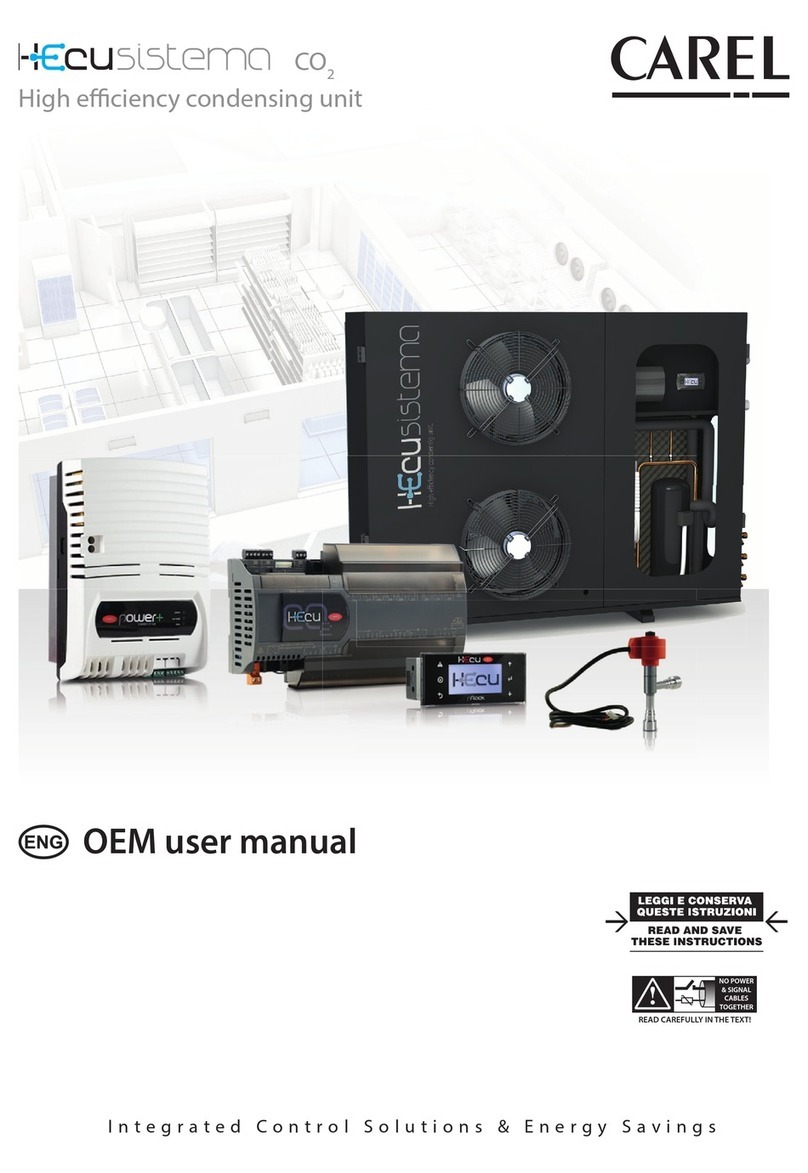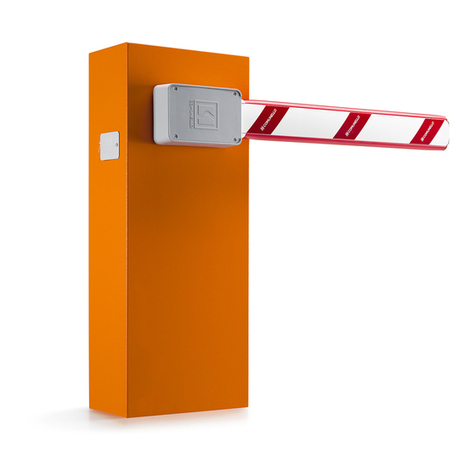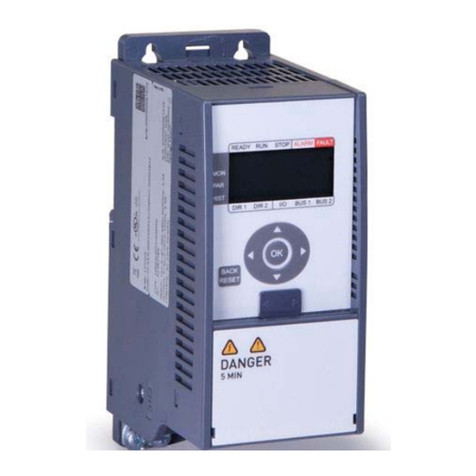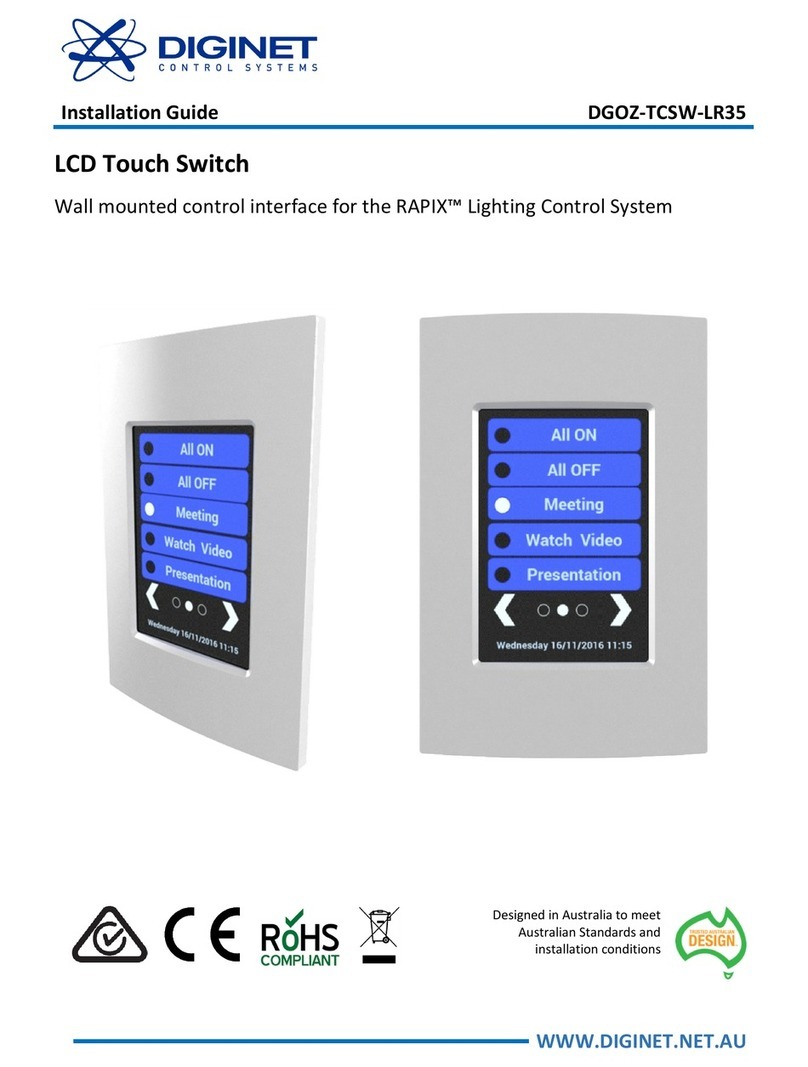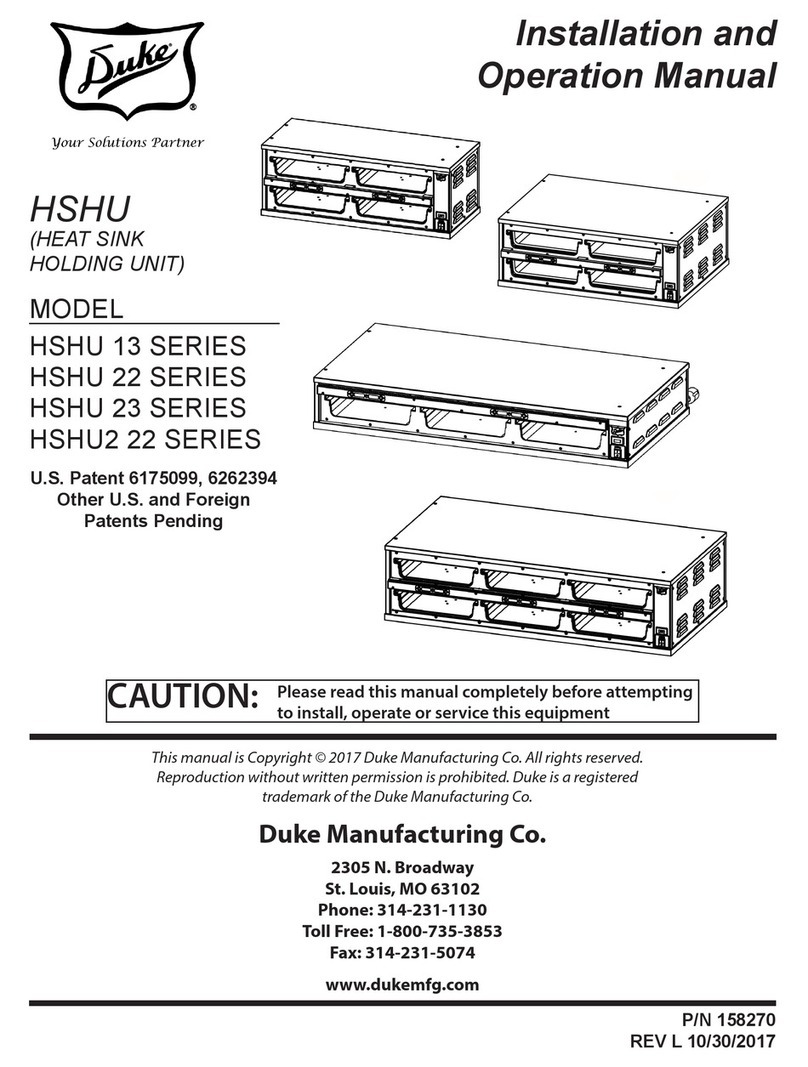
ENG
“FLSTDMAHUE”+030220961 - rel. 1.1 - 28.08.2019
7
1. INTRODUCTION
FLSTDMAHUE is an application program developed by CAREL for the
management of air handling units (AHU). It runs on the pCO5+ range of
programmable controllers (pCO5+ small, medium, large), selected according
to the complexity of the unit, and the pGD1/pLDPRO terminal. Its main feature
is its adaptability to many types of air handling unit, with dierent types of
probes and actuators, on/o type or modulating. Moreover, the possibility to
connect up to two pCOe serial options via RS485 card allows additional probes
and outputs to be added, ensuring maximum exibility. Alternatively, the MP-
Bus® card can be used to connect up to 8 Belimo®, actuators each with its probe
or digital input; this eliminates a lot of the wiring needed during installation.
CAREL temperature, humidity and combined serial probes can be connected,
for both rooms and ducts, as well as active dierential pressure probes, ow
switches and pressure switches to signal alarms following faults on fans or
pumps. The supply and return air fans can be controlled by inverter based
on pressure, ow-rate, speed or air quality requirements. The control software
can manage temperature or humidity as the priority, control an adiabatic
or isothermal humidier, freecooling/freeheating based on enthalpy and
humidity recovery using a heat wheel. The possibility to integrate adiabatic
humidiers into temperature control (with direct evaporative cooling - DEC,
and indirect evaporative cooling - IEC) means the desired conditions can be
reached extremely eectively and eciently. The commissioning procedure is
based on the documented design of the air handling unit being controlled:
the inputs and outputs can be assigned dynamically, meaning there is no xed
position for the various types of probes/actuators connected, with the software
proposing the rst position available for the type of input/output (e.g. a certain
input can accept a passive NTC probe or active probe with 0 to 1 V or 4 to
20 mA output). The identication of the type of AHU being controlled is not
based on the choice between a certain number of pre-congured units; rather
the selection of the devices installed on the AHU (e.g. preheating / cooling
/ reheating coils, fans, pumps, inverter, heaters, dampers, humidiers, heat
recovery unit) and then setting their parameters. This simplies conguration,
as the user only sees the parameters relating to the components used. Changes
can be made subsequently to the conguration without needing to start again
from scratch.
1.1 Main features
• Parameter settings divided by level, user, installer or manufacturer, with
password-protected access;
• temperature and/or humidity control with dierentiated set point in
cooling and heating;
• automatic cooling/heating changeover;
• set point compensation in cooling and heating;
• selection of up to four daily time bands, with settings for each operating
mode;
• holiday and special day function, with reduced set point;
• cascaded control of heating / cooling devices so as to maximise energy
saving;
• operation in comfort, precomfort or economy mode, if time bands are
enabled;
• management of pumps, including in tandem, for preheating cooling/
reheating coils, with rotation, backup, overload alarms and anti-blocking
for each pump;
• minimum water temperature limit settable for opening the coil valves;
• dehumidication by cooling (also with dew point, or specic humidity set
point control) and reheating coil;
• bands for activating the preheating and reheating devices can be
overlapped to supplement each other;
• ON/OFF or modulating control of isothermal or adiabatic humidiers;
• “freecooling” and “freeheating”based on temperature or enthalpy;
• management of adiabatic humidiers for direct (DEC) and indirect
evaporative cooling (IEC);
• heat recovery with cross-ow heat recovery unit, run-around coil or heat
wheel, based on temperature or enthalpy;
• fan control by inverter based on pressure, ow-rate, speed or air quality
requirements;
• management of fans, including in tandem, with rotation and backup
functions;
• air quality control with CO2 and VOC (volatile organic compounds) probes;
• safety protectors for antifreeze, dirty lters, smoke/re, no air or water ow,
humidier alarm, inverter alarm, open door alarm;
• unit antifreeze and room protection;
• up to 4 independent auxiliary control loops, each with its own PI control
and control probe (for example to manage a second humidier);
• input/output test to check correctness of wiring during installation;
• connection via FieldBus port to serial probes, inverters, pCOe expansion
card;
• connection via BMS port to supervisor (PlantVisorPRO, PlantWatch…),
sending the values read by four probes.
1.2 Accessories available for FLSTDMAHUE
Below is a list of devices suitable for use with FLSTDMAHUE. CAREL features
passive, active and serial temperature, humidity and dierential pressure
probes, for room or duct installation, specically for the air handling unit
appliance. See the CAREL price list for the complete list.
Room temperature and humidity sensor
(Technical leaet +050001240)
Temperature sensors
P/N Type Range
DPWT011000 NTC -10T60°C
DPWT010000 0…1 V, 4…20 mA
DPWT014000 RS485 serial opto
Temperature and humidity sensors
P/N Type Range
DPWC112000 0…10 V, 0…10 V -10T60°C,10…90% RH
DPWC115000 NTC, 0…10V
DPWC110000 0…1 V, 4…20 mA
DPWC114000 RS485 serial opto
DPWC111000 NTC, 0…1V, 4…20mA
DPPC112000 0…10 V, 0…10 V -10T60°C,10…90% RH
DPPC110000 0…1 V, 4…20mA
DPPC111000 NTC, 0…1 V, 4…20mA
Duct temperature and humidity sensor
(Technical leaet +050001245)
Temperature sensors
P/N Type Range
DPDT011000 NTC -20T70°C
DPDT010000 0…1 V, 4…20 mA
DPDT014000 RS485 serial opto -20T60°C
Temperature and humidity sensors
P/N Type Range
DPDC112000 0…10 V, 0…10 V -10T60°C, 10…90% RH
DPDC110000 0…1 V, 4…20 mA
DPDC111000 NTC, 0…1V, 4…20mA
DPDC114000 RS485 serial opto
